- It’s we what do
- Cairns To Darwin
- Triumph 900 GT Pro
- Solo Mission: Weekend Blast To Bundarra
- Husqvarna 701 Enduro LR
- Two Heads Are Better Than One
- Adventurous Encounter
- GS Safari Is Go!
- Suzuki V-Strom 1050
- Lyndon Poskitt
- A Touch Of Paradise
- For Some Reason (FSR)
- Carrying Extra Fuel
- Paper Chase
- Andy Strapz Thermalz
- The Bag Lady with Mike Ferris
- Mechanical Sympathy with Miles Davis
- Lockdown Lowdown with Andy Strapz
- Karen’s Lockdown Highs And Lows with Karen Ramsay
- Checkout
- Fit Out
Most riders will need to carry extra fuel at some stage. There’s some good ways and bad ways of doing it.
 Fuel for sale in Asia. Seriously.
Fuel for sale in Asia. Seriously.
Most riders have probably filled a plastic softdrink bottle with a litre or two of fuel to get them out of trouble, and while Adventure Rider Magazine doesn’t recommend it, we’ve all had to at some stage. If we were stuck somewhere and had no choice, we’d do it again.
But with the quality and sheer volume of information available these days, no rider really has to set out without knowing the distances between fuel stops, and that allows sensible planning.
Go big
A big tank, like an Australia Safari Tanks tank, is a great option for those doing long distances often, but not everyone likes the idea of whopping big bulge between their legs all day, every day (KLR riders are used to it). For those folks there are ancillary tanks and jerry cans, which, as long as they’re certificated fuel cells, are a good option. The only thing with jerries and similar-styled containers is securing them to the bike. That can sometimes be a little difficult and ungainly. Also, when they’re empty they still take up the same amount of room.
Bladders on the other hand, offer a few different considerations.
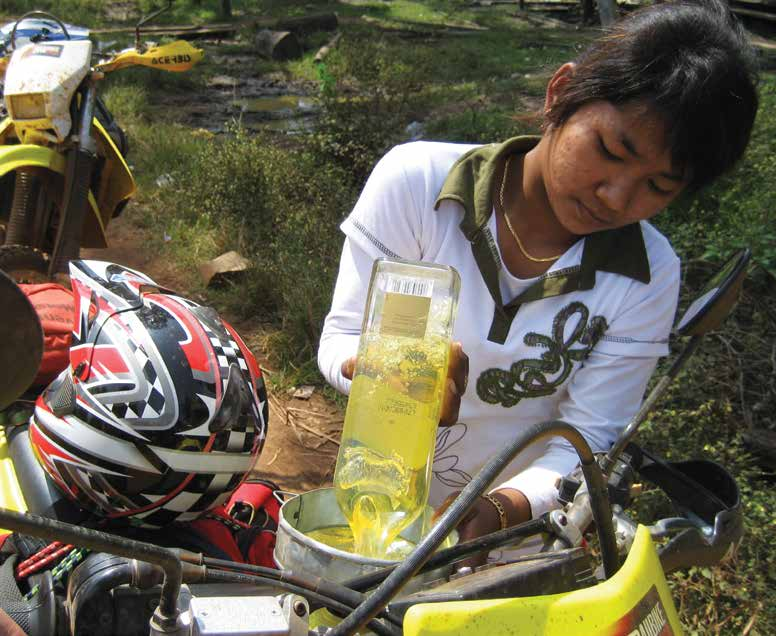 Not recommended, but we’ve all done it.
Not recommended, but we’ve all done it.
Going hard
Like the discussion around soft panniers versus hard panniers, each variety of fuel cell has its pros and cons.
RotoPax makes a hard fuel container that can easily be securely mounted and are as tough as buggery. They have mounts and racks which allow securing horizontally or in the vertical position, either in place of, or on the outside of, panniers or a bike’s existing rack.
But for those who like them mounted in the position of traditional hard panniers, they’ll still catch the feet in deep sand and ruts. And when they’re empty they take up the same amount of room as when they’re full.
Some other options for a hard fuel cell are the Camel ADV and Australian Safari auxiliary tanks which are specifically made for various model bikes, and of course, a you-beaut jerry from the servo.
Servo jerries generally aren’t designed for the rough-and-tumble of adventure riding, but are a considerable step up from a softdrink bottle. Softdrink bottles are made from what’s called a PET plastic, and some PETs will dissolve when exposed to petrol.
Keep that in mind. A good rule for all auxiliary fuel cells is to transfer the fuel to the bike’s main tank ASAP.
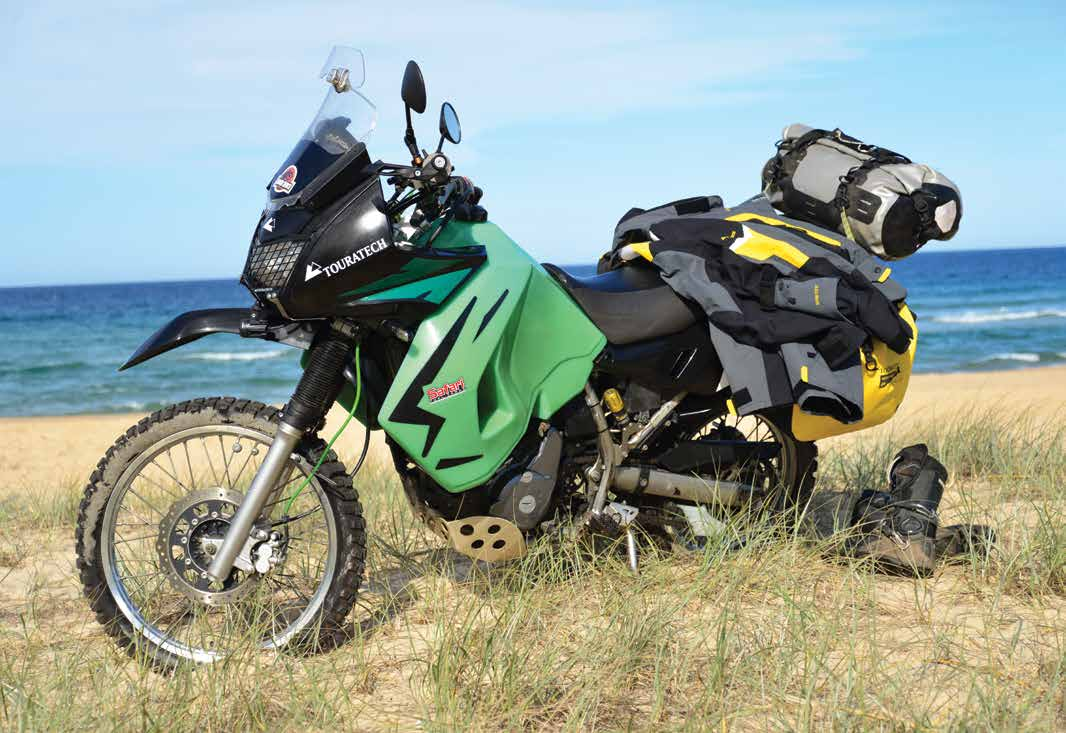 An Australian Safari Tanks cell gives great range, but won’t suit everyone.
An Australian Safari Tanks cell gives great range, but won’t suit everyone.
Soft on
Soft fuel cells – fuel bladders – usually ride on top of luggage, but it’s not as easy to get them securely mounted, and there’s always the risk they’ll burst. Some bladders are prone to leaking as well. One of the biggest things in favour of a fuel bladder is when it’s empty it can be rolled up and stowed away, taking up much less room.
AdventureMoto has recently started producing its own fuel bladder, and Steve Smith, the big hog at the AdventureMoto trough, was happy to talk us through the thoughts and ideas used to design and produce the ADV Fuel Bag.
“What I found with the bladders I’d tried was they vented a lot,” said Steve, “and the fittings were basically reworked agricultural fittings. We wanted something that was purpose-designed for adventure riding.
“We made sure the bladders fitted well with the easy-pour spout and the caps wouldn’t come loose. Most of the leakage problems we’d seen in the past were to do with the cap, so we trialled the child-proof ratchet cap we’re using now, and it won’t come undone accidentally.
“We also wanted to ensure the inner bladder was really strong.
We used a heavier-grade TPU liner. It’s RF-welded, and it’s really strong. The outer liner is a ballistic-nylon bag with MOLLE straps and it’s tough.”
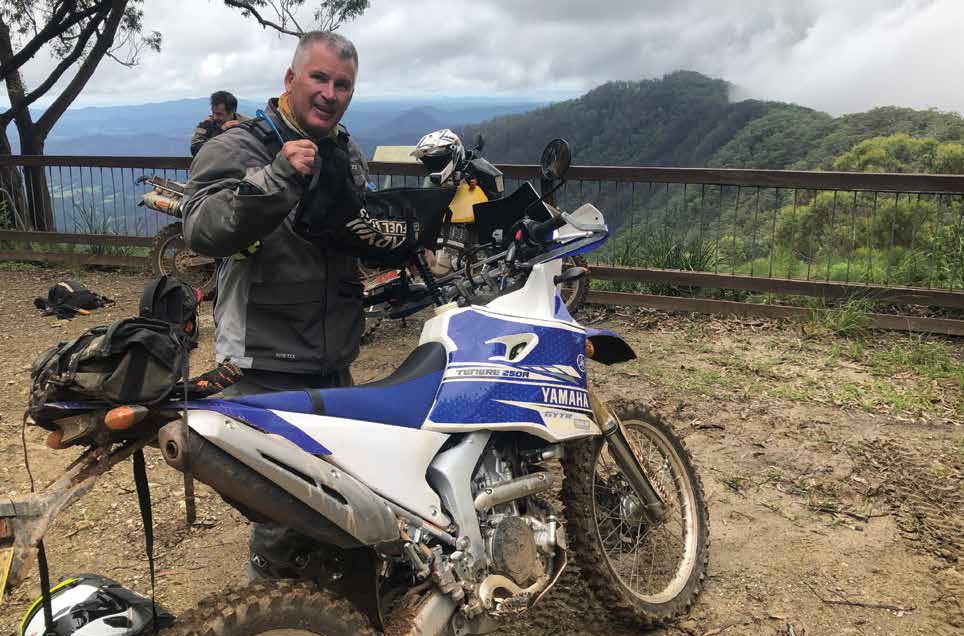 Adventure Rider Magazine’s editor has given the ADV Fuel Bag a pizzling and it’s held up well.
Adventure Rider Magazine’s editor has given the ADV Fuel Bag a pizzling and it’s held up well.
 One of the biggest things in favour of a fuel bladder is when it’s empty it can be rolled up and stowed away, taking up much less room.
One of the biggest things in favour of a fuel bladder is when it’s empty it can be rolled up and stowed away, taking up much less room.
Keep in mind
A rider looking for a good-quality bladder should look for one which doesn’t leak too much vapour, doesn’t need continual venting, and has a strong protective cover with good mounting points.
Another factor to keep in mind with soft-versus-hard fuel containers is that, in general, soft containers are for transport and short-term storage of fuel. Hard containers are for longer-term storage and transport.
Those are a few things to think about when deciding which auxiliary fuel option will work best for you.
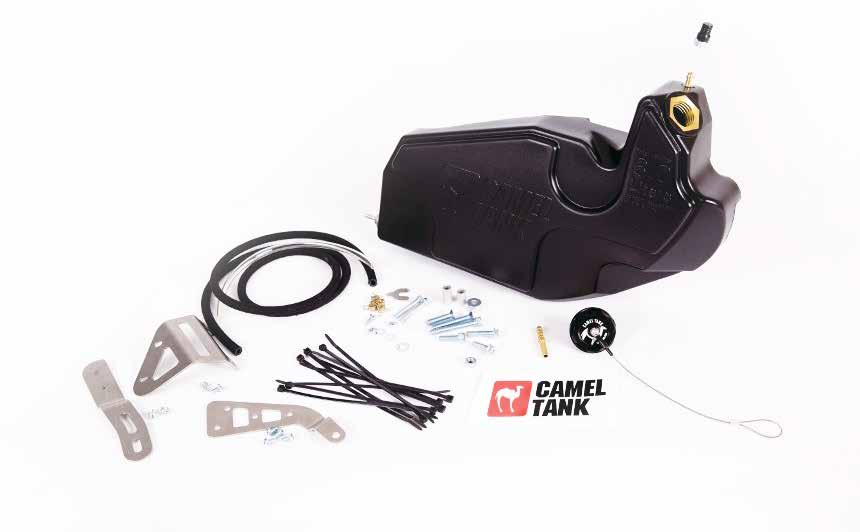 Camel ADV auxiliary tanks are specifically made for various model bikes and are intended to be mounted and left in place.
Camel ADV auxiliary tanks are specifically made for various model bikes and are intended to be mounted and left in place.
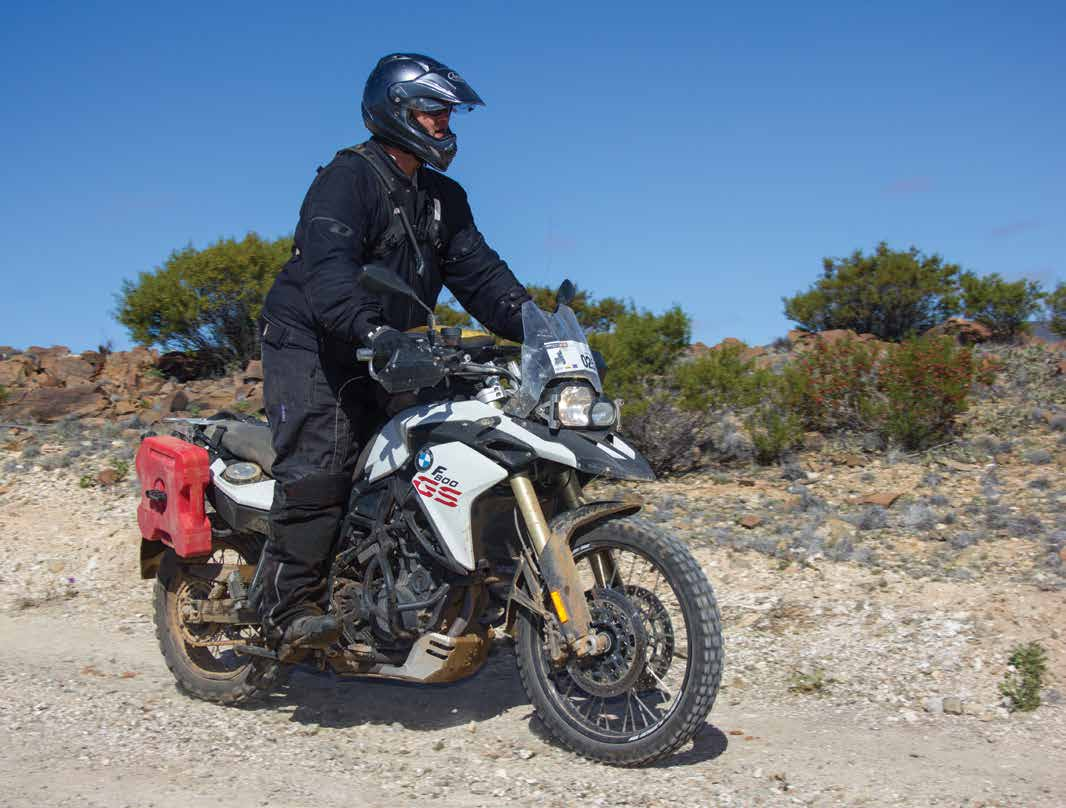 RotoPax fuel cells can mount vertically or horizontally. They’ll stack on top of each other and lock in place, too.
RotoPax fuel cells can mount vertically or horizontally. They’ll stack on top of each other and lock in place, too.
 RotoPax are tough, purpose-built auxiliary fuel containers.
RotoPax are tough, purpose-built auxiliary fuel containers.



















Comments